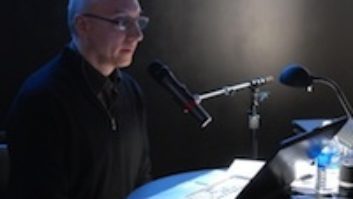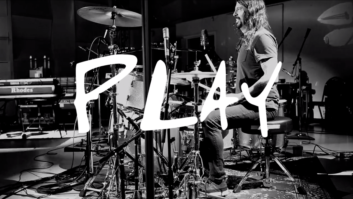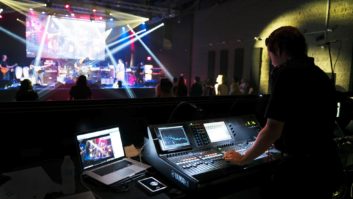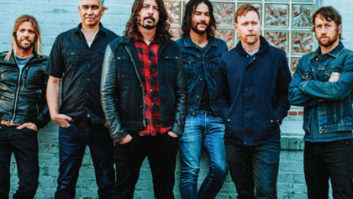During the early 1970s, while rock music was shooting for the arenas and pop was entering a seemingly committed phase of disposable one-hit wonders, there was a group of singer/songwriters fueled by the creative explosion of the ’60s, and yet with a deep connection to the American roots music forms of traditional country, folk and blues.
Movie director James Szalapski caught on to this emerging movement at the time and, through introductions made by a young stand-up bassist named “Skinny” Dennis Sanchez, began an odyssey that would lead him from L.A. to Austin, Texas, to Nashville. Along the way, Szalapski would meet Guy Clark, Townes Van Zandt, David Allan Coe and a host of other characters. Charged by what he saw, Szalapski eventually hooked up with Graham Leader in Paris, who became the producer for Heartworn Highways, the best documentary ever made to chronicle the early days of some of the most important and influential artists of what many people now call Americana.
In a 1996 interview with Thomas W. Campbell, Szalapski (now deceased) stated that what made making this movie a compelling idea was the observation that there were all these singer/songwriters and musicians who had gone to L.A. and New York and “discovered it wasn’t where they belonged. Their roots were in the South, and they had an emotional connection to their grandparents’ generation there.” Szalapski pointed out that Nashville’s Music Row, at the time, was “very rigid” and “all of the songs were sounding the same,” while these young renegades were looking back to a time and a sensibility that wasn’t invested in formulaic music.
A number of these young artists were also gravitating to Austin. From Szalapski’s point of view, “Austin kinda became the capital for this new music.” The highway between Austin and Nashville is a thread that runs through the film, primarily courtesy of David Allan Coe’s tour bus and concert footage with Charlie Daniels.
“It is a generous film that is intimate and quiet in its own way, and it lets the music and the characters speak for themselves,” says producer Leader. “In terms of the music and the musicians, the film really wears its heart on its sleeve.”
The movie was originally supposed to be titled New Country, but before the release, the media was inundated with an ad campaign for a yogurt called New Country. So the film was momentarily renamed Outlaw Country before settling on Heartworn Highways. The word “heartworn” was coined by film editor/assistant director Phillip Schopper.
The production came together in a loose, organic fashion, recalls Steve Young, who was about to record his solo debut for RCA at the time. “It was very casual, as everything was at the time. Somebody just announced to Guy [Clark], ‘You know these guys from Europe…they just want to shoot some film while we sit around and do what we usually do. We’re going to invite some people over, so why don’t you come over?’” says Young. “It just sort of got started that way and took its own life and gained some momentum.
“For this lost group of which I am always considered to be a part of, there were these sort of home fronts — you might call them — that popped up from time to time,” Young adds. “The main one was Guy and Susanna Clark’s little house out in Mount Juliet, Tennessee. They had that old, family-like home-and-hearth fireplace kind of thing going on, where you kind of felt, ‘I might not be a part of anything else but I’m certainly a part of this.’ There might have been a lot of self-destruction and a lot of addiction, but still, there was some kind of warmth in there. I do think that it was truly an artistic bohemian kind of thing, and it was sort of the opposite of Music Row and any corporate endeavor.”
Compared to much of the stuff that Music Row was cranking out at the time, the music on Heartworn Highways shows that this group was pulling out many songs that would later become classics. Twenty-five years later, the chasm between commercial mainstream Music Row and Americana music’s insurgent upstarts looks and feels just about the same.
“We were all doing the best that we could. We were trying to make [songwriting] more than moon, June, spoon,” says Clark, who in many ways was a focal point for the movie.
Besides presenting the original film, the DVD has extensive bonus material, including stellar footage of performances by Van Zandt, John Hiatt, Clark, Charlie Daniels, a rail-thin Steve Earle and the often overlooked Richard Dobson.
“I think that the storytelling talents of some of these writers is spectacular, like Guy Clark,” says Leader. “His performance of ‘Desperadoes Waiting for the Train’ may be the best thing on the whole DVD. If you really listen to ‘Desperadoes’ and what that song is about, it absolutely breaks your heart. There is so much great stuff in this movie throughout, and the musicianship is fantastic.”
When the opportunity came to restore the movie for DVD, Schopper realized that if they waited any longer, the film might be too deteriorated to save in color.
“The colorist and I judged this 35mm negative as already suffering some serious fading,” he says. “If we hadn’t done it now, we both thought that in about two years, it would just look so bad that there would be no alternative but to just do black-and-white. We caught it just at the right time. The DVD has sort of saved the movie forevermore.
“We had begun restoration at the end of January 2003, but we had to go down to Nashville and dig through the cans of the original 16mm material,” he adds. “One of the hard parts these days is finding an editing room where you can really work on film. Nowadays, you work on an Avid machine or Final Cut Pro and you edit on computer and don’t touch film anymore, so it is kind of hard to find the film equipment. Fortunately, I did.”
The audio elements of Heartworn Highways include stereo and mono interviews and performances. Renowned feature film audio mixer Lee Dichter (The Hours, Bowfinger, The Shipping News, Men In Black) of New York-based Sound One originally did the mix in 1978. At the time, Dichter was mixing commercials at his father’s facility, Photo Magnetics Sound Studios.
“I mixed this project on a mono console, so we jerry-rigged it up to do stereo,” says Dichter. “We hung two speakers and did a discrete left/right mix. It wasn’t mixed through the Dolby left/right system, so we had more separation, and when you hear this, you really hear different parts of the instruments coming out of the different speakers. It is stereo, but in some places, it folded into mono because we didn’t have stereo material. We tried to do it as smooth as we could have at the time.
“There was one recording studio scene early on in the movie, where they cut to the control room, and the mixer behind the console [a young Brent Maher] pushes some cue buttons. We actually cut from stereo to mono and then back to stereo again,” Dichter says with a laugh. “It is probably something that we would never do now, but it was so early in my training as far as stereo was concerned. We broke the rules. It was fun. We did what we could with what we had. Some of the interviews were stereo, while some were mono. For the mono, we tried to stereo-ize it by splitting the equalization into different speakers to get more of a stereo feel. When we couldn’t do that, we stuck with mono. Most of the performances we had were stereo tracks, but we somehow rigged it up to where we could get different instruments moving around the speakers to widen things up.”
Concerning the film’s ongoing exposure, Leader states, “We’re aiming to do a fairly major screening at South By Southwest [music conference], like the one that we did at the museum in Nashville. We are hopefully going to do a concert with all of the musicians in the film later on next summer. The idea of this film is that it should be like a sustained release and not just, ‘Let’s just hit the stores before Christmas and grab what we can.’ This is really a valid historical document and a film worth seeing that has been long buried.”
In the meantime, anyone who loves Americana music, great outlaw country or smart folk-influenced singer-songwriters will find Heartworn Highways a consistently rewarding DVD to have in his or her collection.




